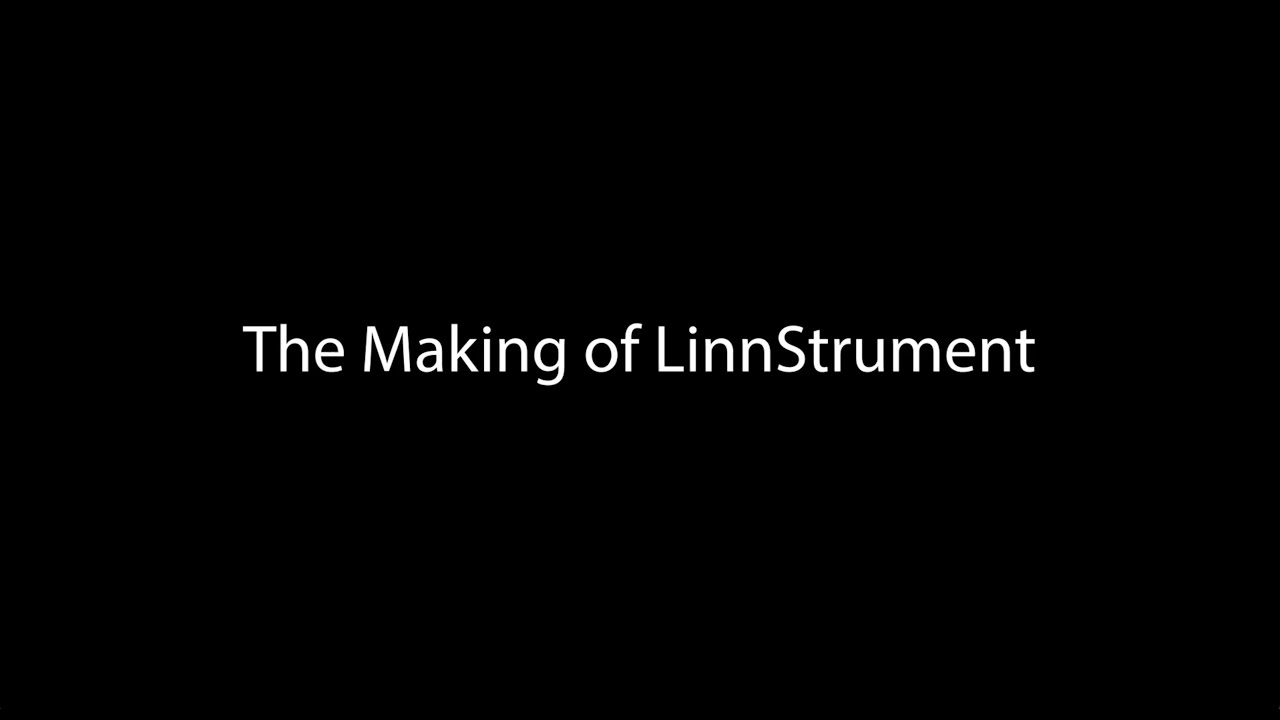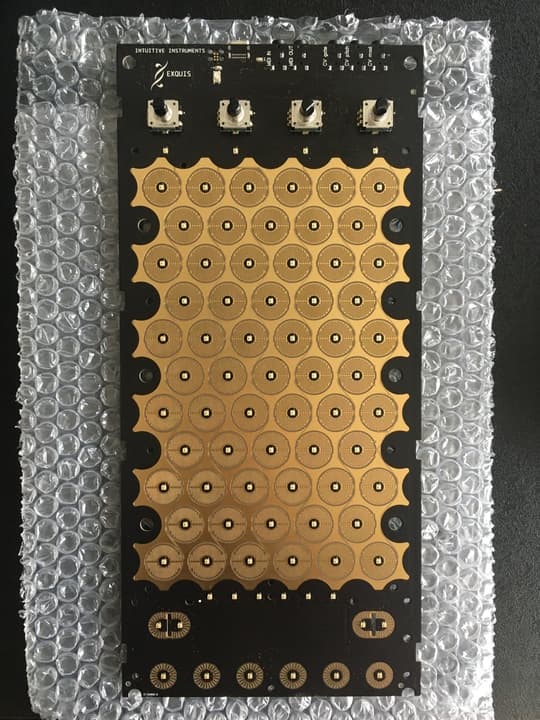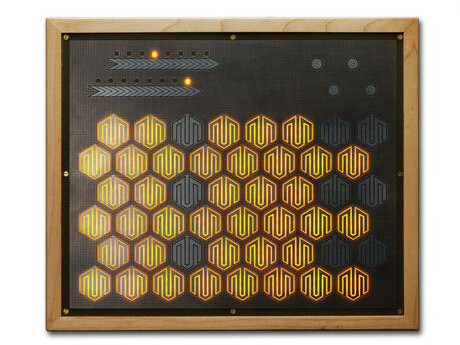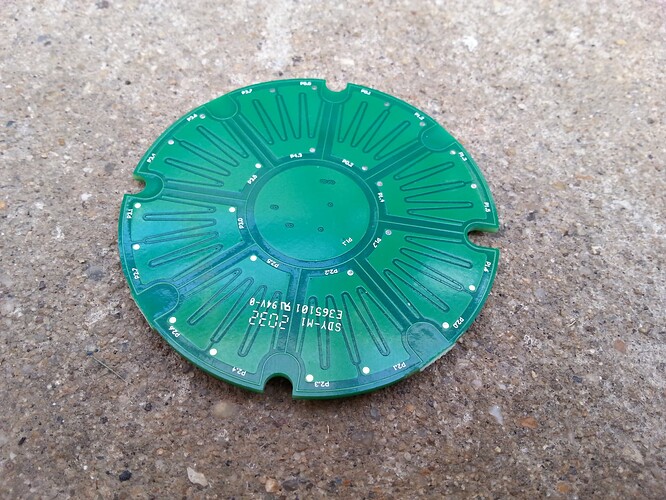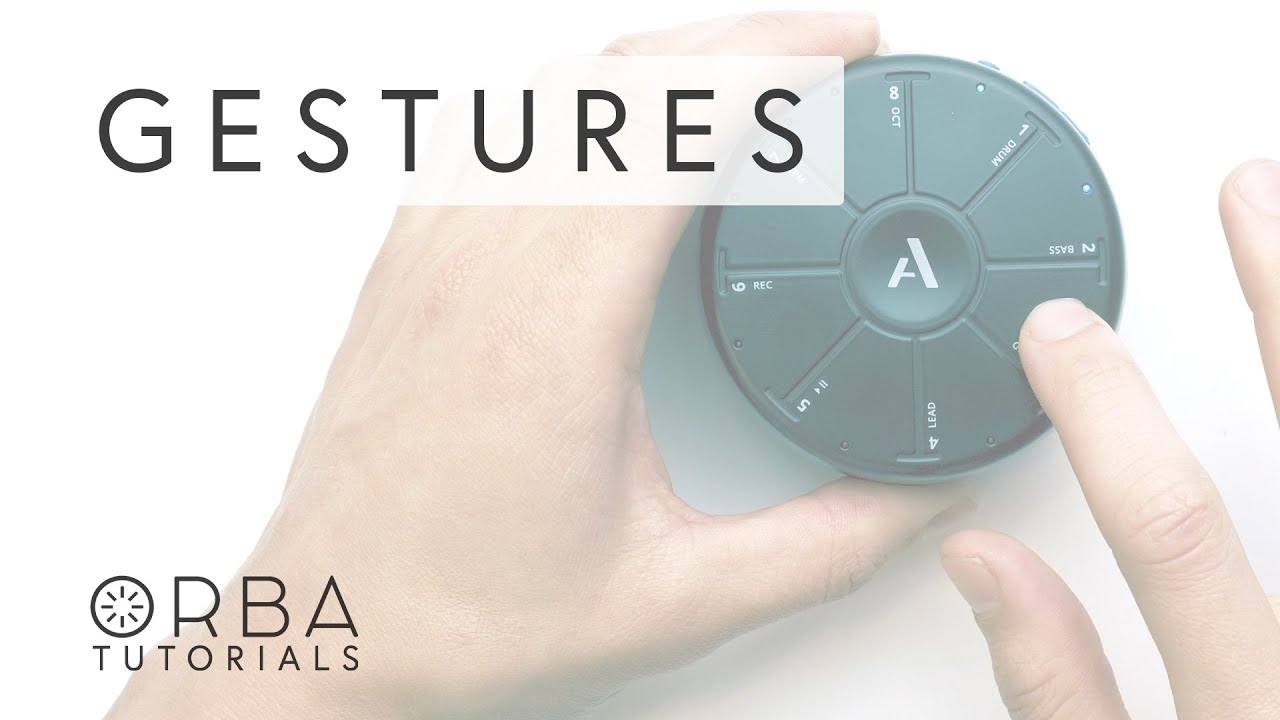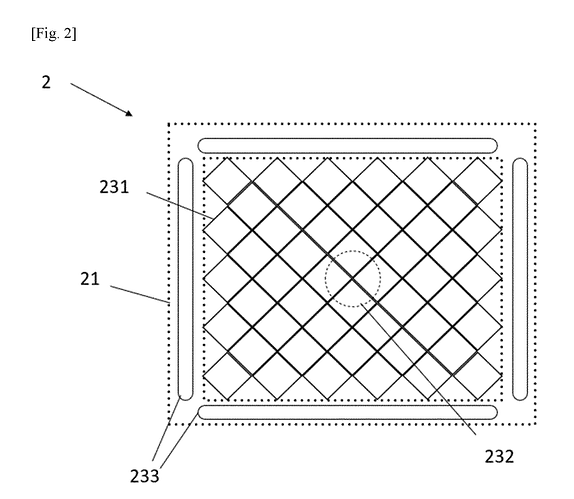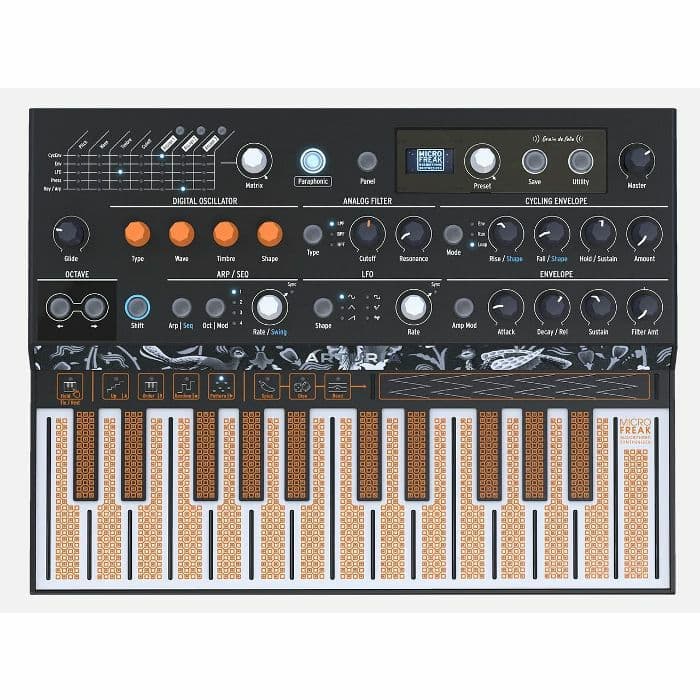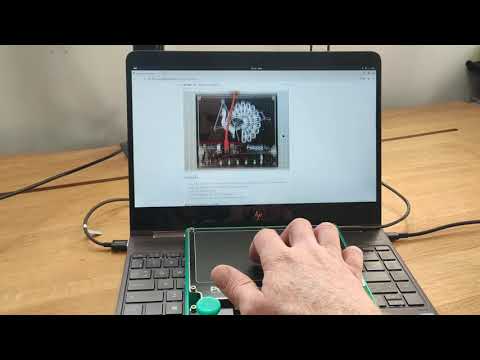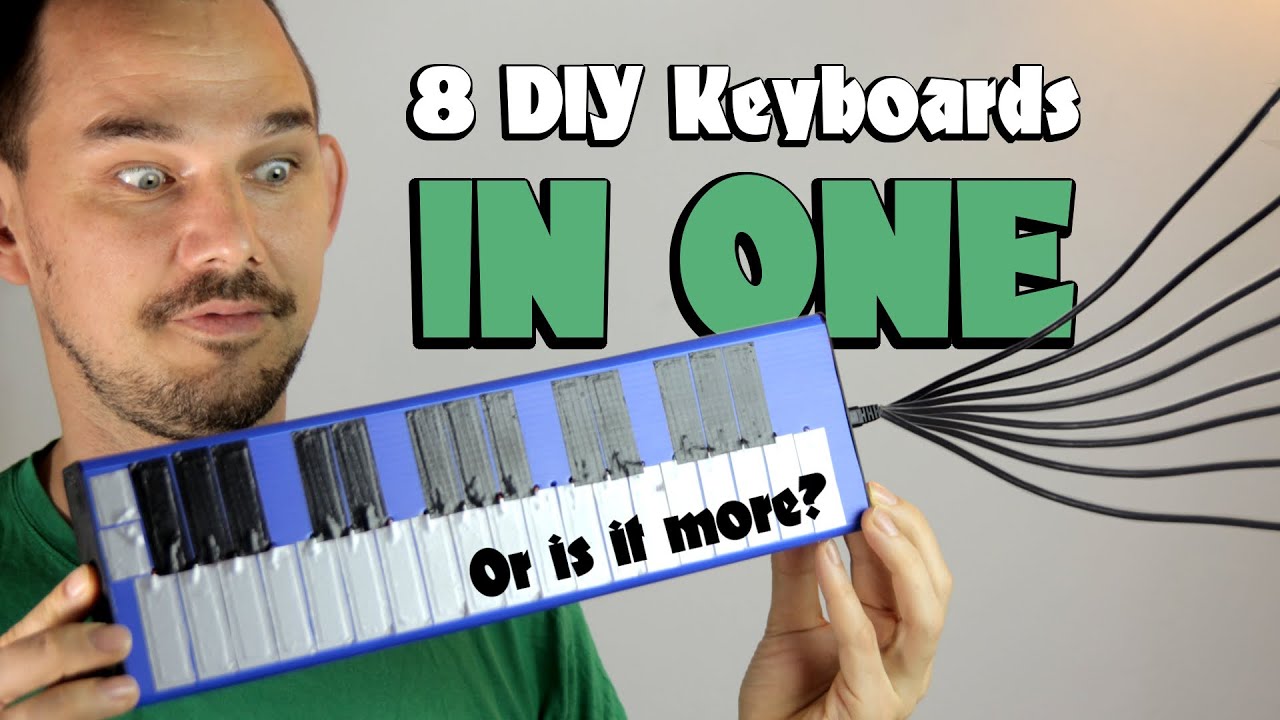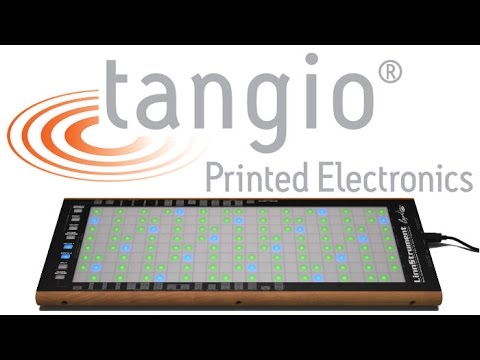I went down a bit of a Loom rabbit-hole after Ksoloti’s post. The patent is here.
https://worldwide.espacenet.com/patent/search/family/088315878/publication/WO2024088720A1?q=aodyo
As mentioned in the Loom thread, it’s apparently a combination of capacitive touch with piezeo. It has some interesting ideas, such as using an array of piezo sensors, and associating these with touch positions. There’s a certain amount of dicussion of proximity sensing; making calculations about the velocity of an impending strike, and even its angle. The basic idea is to combine the technologies to get the best of both worlds; position and impact.
The cap touch part is apparently based on a standard diamond-type array of the kind found in trackpads.
I’ve realised the value of cap touch controllers in interpreting the data to make it more digestible for the microcontroller. By rummaging through various MIDI controllers I’ve broken open I can see that the Orba uses the CYC4045AZI-S413…based on previous hacking attempts, I’m pretty sure it’s loaded with custom firmware. And the touchscreen on the Misa Tri-Bass uses the SSD2533QT6.
Given how well different devices track position/pressure/velocity, I’m interested in the idea of a cap touch design that can do all of them. It sounds like the Arturia MicroFreak handles velocity, though I’ve never tried one. It seems to have a Manta-like approach, using coverage based on an unusual pattern.
The tricky part would be the programming. There’s an open-source trackpad design called the Peacock on Github which can track touch (and other gestures like pinch-zoom), but it would be completely beyond me to try and add pressure/velocity based on calculations about, say, how quickly elements in close proximity were activated, to read how fast you’re pressing it.
Although it’s a trackpad, this project uses a Maxtouch IC designed for touchscreens. (“I have chosen to use a touchscreen controller as they tend to be designed for much larger sensor areas than touchpad controllers.”)
This uses the same diamond layout for the cap touch elements. These are wired up in rows and columns…the basic idea is explained in docs like these.
But I can’t find any open-source code for velocity estimations with this type of design, or cap touch controllers that have it built into the firmware.
The only available velocity code I’ve come across is for the simpler KontinuumLAB cap touch keyboard project.
So…interesting idea, but recreating the Loom is out of my depth!
![]()
